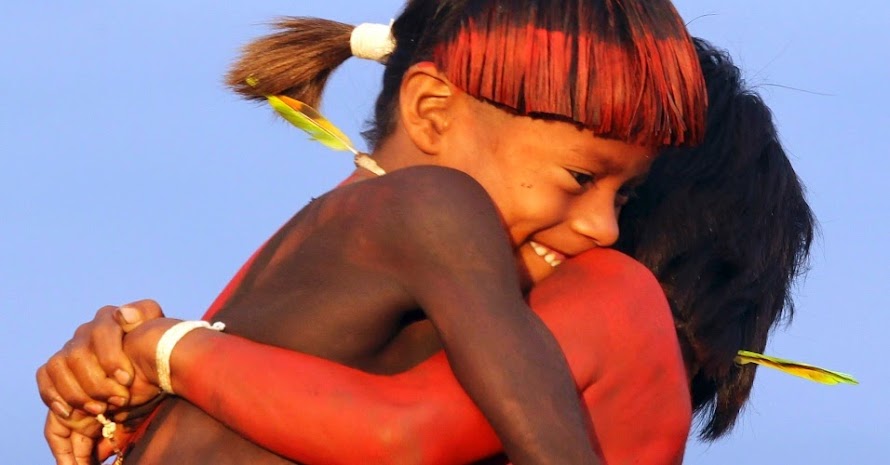Now that the biggest festival (Carnival) is over, let´s keep our stones rolling, looking forward to the next ones:
 Holidays and Festivals in March:
Holidays and Festivals in March:
Semana Santa: The week before Easter in March or April. Celebrations in Congonhas (Ouro Preto)- state of Minas Gerais, and Goias Velho (State of Goiás).
Holidays and Festivals in April:
Micareta: In April or early May, Feira de Santana (State of Bahia)
Holidays and Festivals in May:
Festa do Divino Espirito Santo: In May or June, 40 days after Easter, Parati (State of Rio de Janeiro)
Cavalhada: 45 days Easter, Pirenopolis- state of Goiás.
Festa do Divino: First Sunday after Ascension Day, Alcantara (State of Maranhao)
Holidays and Festivals in June:
Festas Juninas: Throughout June in the state of Rio
Festival Folclorico do Amazonas (Carnival in the Amazonas): Manaus (Amazonas)
Festa de Sao Joao: June 22nd to 24th, Parintins (Amazonas)
Boi-Bumbá: 3 days in late June, Parintins (Amazonas)
Bumba Meu Boi: Late June to the second week of August, Sao Luis (Maranhão)
Holidays and Festivals in July:
Regata de Jangadas: Second half of July, Fortaleza (Ceara)
Festival de Dança: Joinville (Santa Catarina)
Carnaval Fora-de-Epoca: Last week of July, Fortaleza (Ceara)
Holidays and Festivals in August:
Festa da Nossa Senhora da Boa Morte: Middle of August, Cachoeira (Bahia)
Festa de Iemanjá: August 15th, Fortaleza (Ceara)
Festa de Nossa Senhora d'Ajuda: August 15th, Porto Seguro (Bahia)
Folclore Nordestino: Late August, Olinda (Pernambuco)
Holidays and Festivals in September:
Festa de Nossa Senhora de Nazaré: September 7th to 8th, Saquarema (Rio de Janeiro)
Festa de Nossa Senhora dos Remedios: September 8th, Parati (Rio de Janeiro)
Festa do Cairé: 2nd week of September, Alter do Chão (Pará)
Jubileu do Senhor Bom Jesus do Matosinhos: September 7th to 14th, Congonhas (Minas Gerais)
Holidays and Festivals in October:
Cirio de Nazare: Second Sunday of October, Belem (Para)
Festa de Nossa Senhora Aparecida: October 12th, Aparecida (Sao Paulo)
Oktoberfest: Middle two weeks of October, Blumenau (Santa Catarina)
Rio Jazz Festival: October, Rio de Janeiro
Holidays and Festivals in November:
Festa do Padre Cicero: November 1st to 2nd, Juazeiro do Norte (Ceara)
Holidays and Festivals in December:
Carnatal: First week of December, Natal (Rio de Grande do Norte)
Festa de Santa Barbara: December 4th to 6th, Salvador (Bahia)
This is not an exhaustive list of holidays and festivals in Brazil but will give you an idea of where to go to catch some Brazilian culture, music and dance.
 Holidays and Festivals in March:
Holidays and Festivals in March:Semana Santa: The week before Easter in March or April. Celebrations in Congonhas (Ouro Preto)- state of Minas Gerais, and Goias Velho (State of Goiás).
Holidays and Festivals in April:
Micareta: In April or early May, Feira de Santana (State of Bahia)
Holidays and Festivals in May:
Festa do Divino Espirito Santo: In May or June, 40 days after Easter, Parati (State of Rio de Janeiro)
Cavalhada: 45 days Easter, Pirenopolis- state of Goiás.
Festa do Divino: First Sunday after Ascension Day, Alcantara (State of Maranhao)
Holidays and Festivals in June:
Festas Juninas: Throughout June in the state of Rio
Festival Folclorico do Amazonas (Carnival in the Amazonas): Manaus (Amazonas)
Festa de Sao Joao: June 22nd to 24th, Parintins (Amazonas)
Boi-Bumbá: 3 days in late June, Parintins (Amazonas)
Bumba Meu Boi: Late June to the second week of August, Sao Luis (Maranhão)
Holidays and Festivals in July:
Regata de Jangadas: Second half of July, Fortaleza (Ceara)
Festival de Dança: Joinville (Santa Catarina)
Carnaval Fora-de-Epoca: Last week of July, Fortaleza (Ceara)
Holidays and Festivals in August:
Festa da Nossa Senhora da Boa Morte: Middle of August, Cachoeira (Bahia)
Festa de Iemanjá: August 15th, Fortaleza (Ceara)
Festa de Nossa Senhora d'Ajuda: August 15th, Porto Seguro (Bahia)
Folclore Nordestino: Late August, Olinda (Pernambuco)
Holidays and Festivals in September:
Festa de Nossa Senhora de Nazaré: September 7th to 8th, Saquarema (Rio de Janeiro)
Festa de Nossa Senhora dos Remedios: September 8th, Parati (Rio de Janeiro)
Festa do Cairé: 2nd week of September, Alter do Chão (Pará)
Jubileu do Senhor Bom Jesus do Matosinhos: September 7th to 14th, Congonhas (Minas Gerais)
Holidays and Festivals in October:
Cirio de Nazare: Second Sunday of October, Belem (Para)
Festa de Nossa Senhora Aparecida: October 12th, Aparecida (Sao Paulo)
Oktoberfest: Middle two weeks of October, Blumenau (Santa Catarina)
Rio Jazz Festival: October, Rio de Janeiro
Holidays and Festivals in November:
Festa do Padre Cicero: November 1st to 2nd, Juazeiro do Norte (Ceara)
Holidays and Festivals in December:
Carnatal: First week of December, Natal (Rio de Grande do Norte)
Festa de Santa Barbara: December 4th to 6th, Salvador (Bahia)
This is not an exhaustive list of holidays and festivals in Brazil but will give you an idea of where to go to catch some Brazilian culture, music and dance.






 The Department's
The Department's 






























